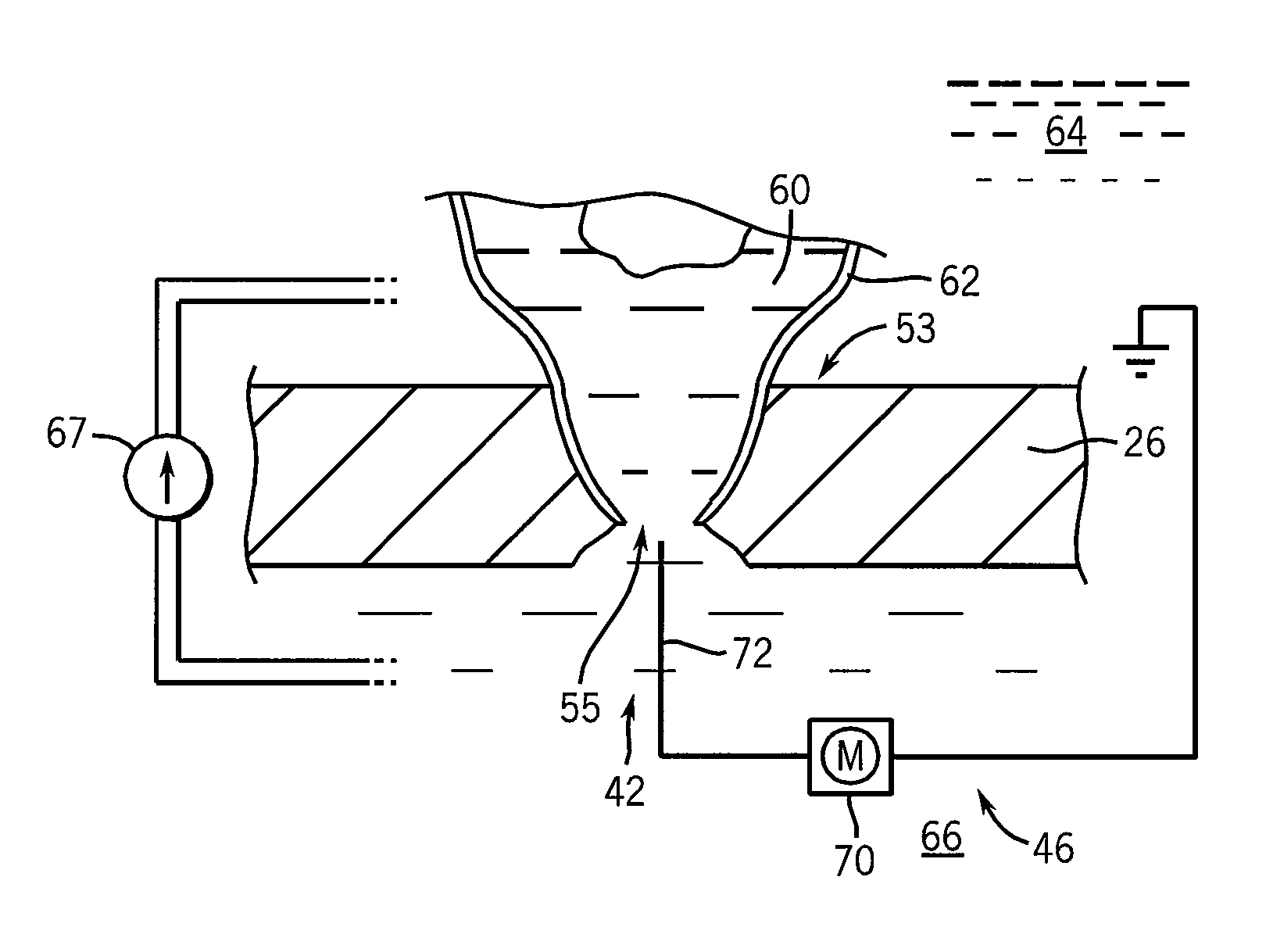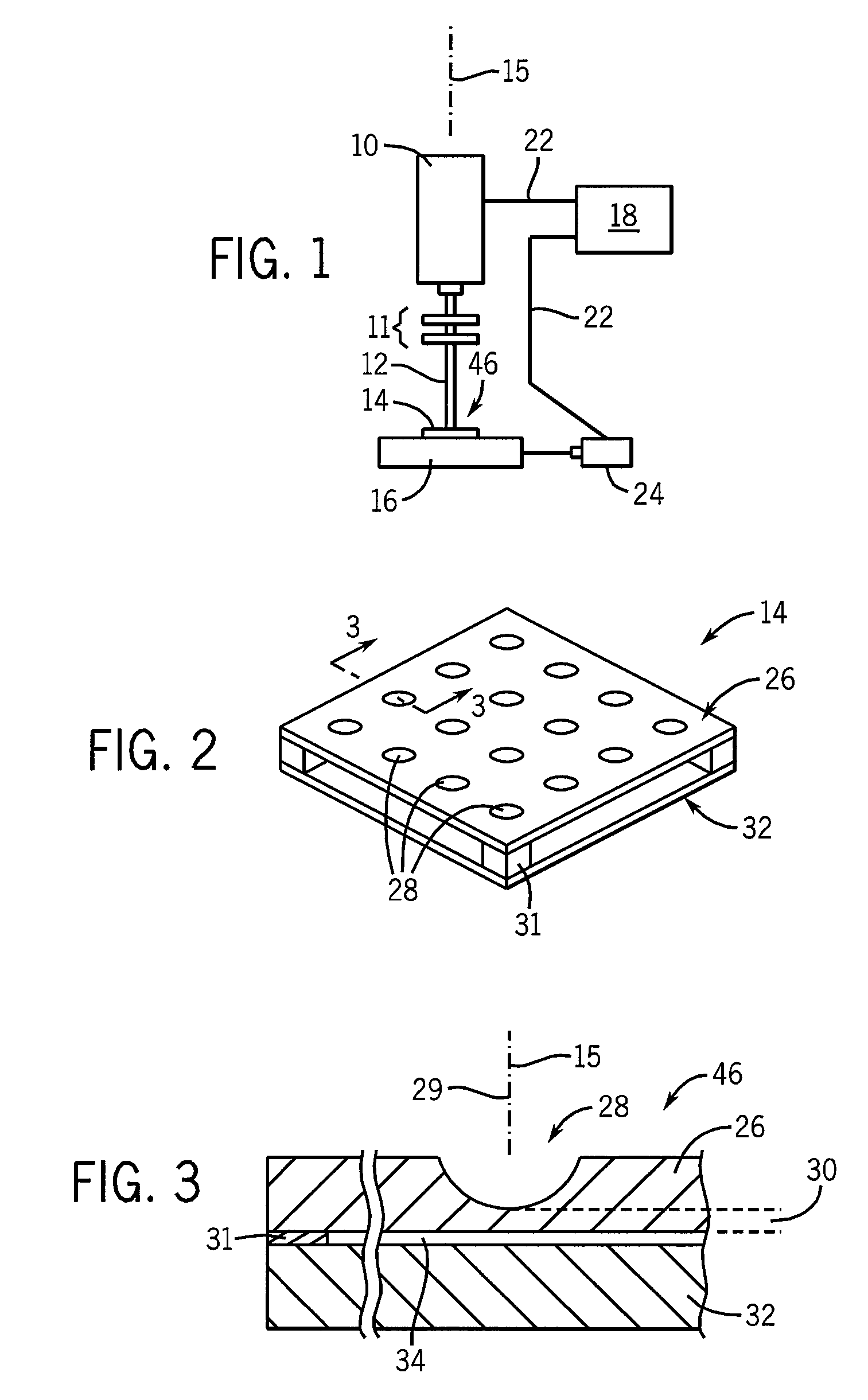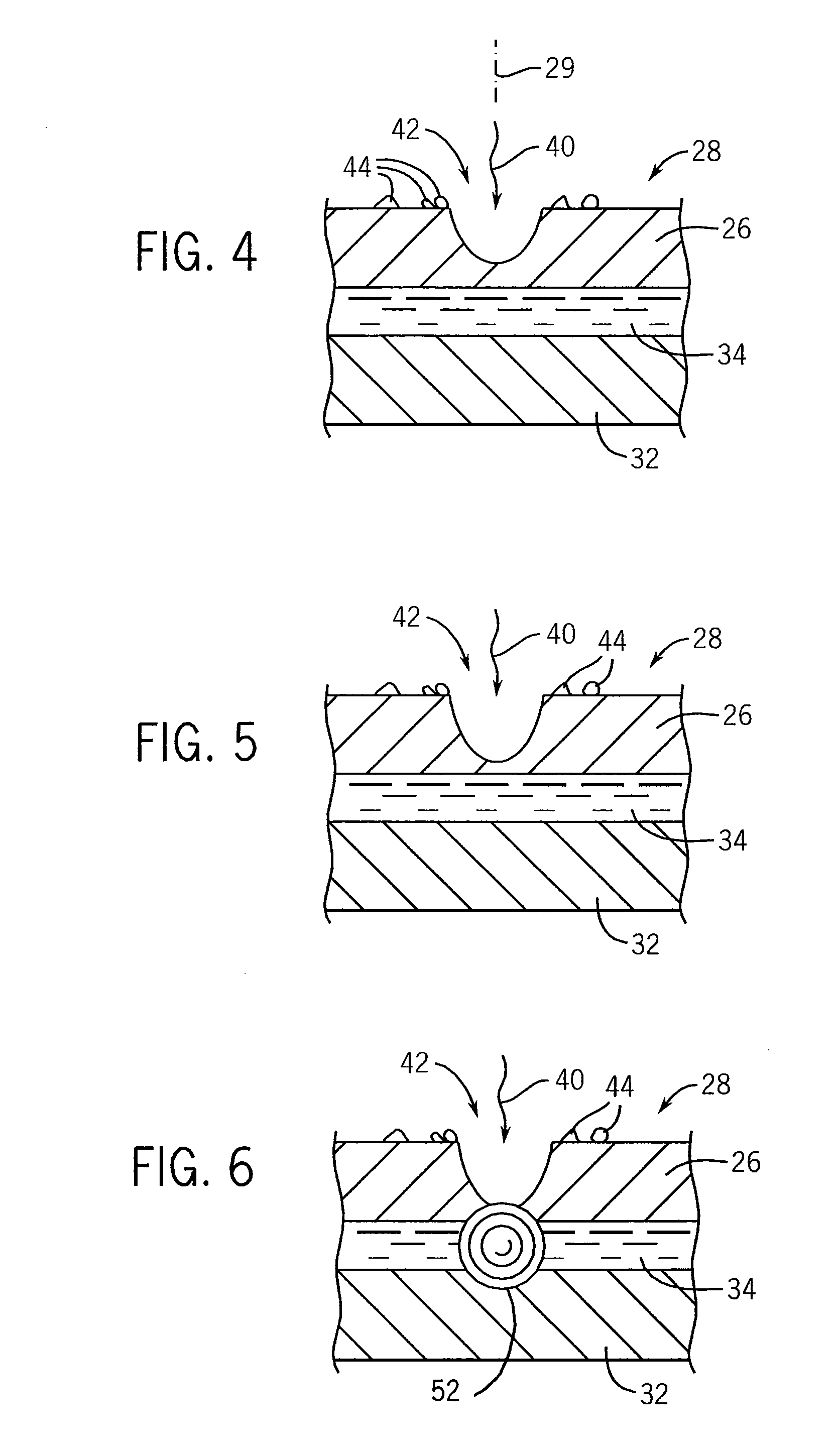Retro-percussive technique for creating nanoscale holes
a nano-scale hole and retro-percussive technology, applied in the field of patch clamping, can solve the problems of reducing the electrical resistance of the hole so formed, affecting the production of nano-scale holes in the plate structure, and spreading molten glass and debris on the exit of the hole, so as to achieve high resistance sealing and increase the ability of the pore
- Summary
- Abstract
- Description
- Claims
- Application Information
AI Technical Summary
Benefits of technology
Problems solved by technology
Method used
Image
Examples
Embodiment Construction
[0037]Referring now to FIG. 1, the present invention may use an excimer laser 10 having collimating and focusing optics 11 to direct a narrow collimated beam 12 of light along an axis 15 toward a front surface of a substrate assembly 14 held on a mechanical stage 16. The laser may, for example, have a frequency range of 192 to 157 nm.
[0038]The laser 10 and stage 16 may be controlled by an automated controller 18 of the type well known in the art providing control signals 22 to the laser 10 controlling its output power in a series of pulses as will be described and providing control signals 22 to actuator motors 24 providing x-y control of the stage 16.
[0039]Referring now to FIGS. 2 and 3, the substrate assembly 14 may include an upper substrate 26, for example, a borosilicate cover slip having a thickness of approximately 150 microns. A front surface of the upper substrate 26 may have a series of depressions or wells 28 formed at regular x-y grid locations 29. The wells 28 provide a...
PUM
| Property | Measurement | Unit |
|---|---|---|
| Diameter | aaaaa | aaaaa |
| Nanoscale particle size | aaaaa | aaaaa |
| Thickness | aaaaa | aaaaa |
Abstract
Description
Claims
Application Information
 Login to View More
Login to View More - R&D
- Intellectual Property
- Life Sciences
- Materials
- Tech Scout
- Unparalleled Data Quality
- Higher Quality Content
- 60% Fewer Hallucinations
Browse by: Latest US Patents, China's latest patents, Technical Efficacy Thesaurus, Application Domain, Technology Topic, Popular Technical Reports.
© 2025 PatSnap. All rights reserved.Legal|Privacy policy|Modern Slavery Act Transparency Statement|Sitemap|About US| Contact US: help@patsnap.com



